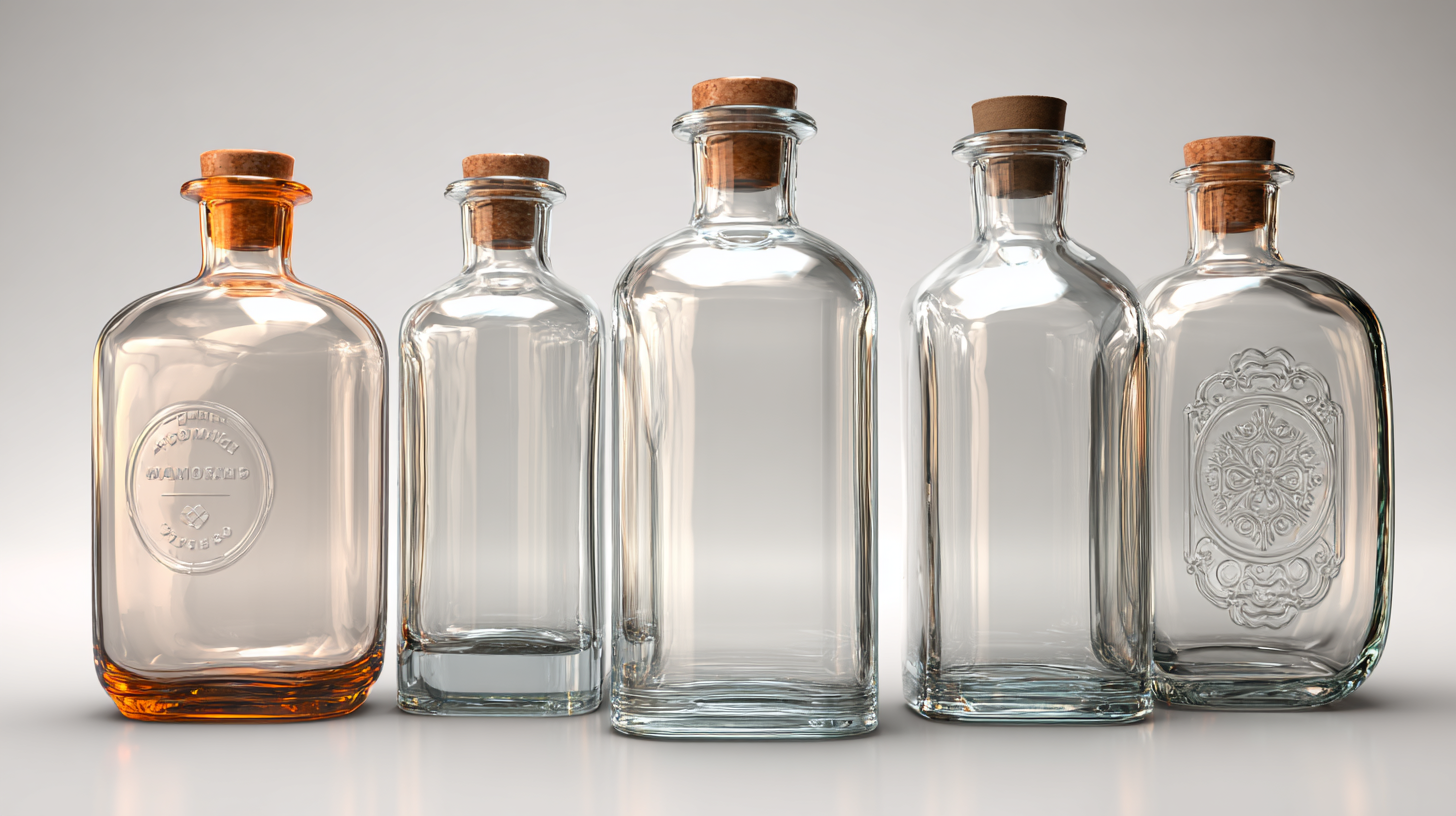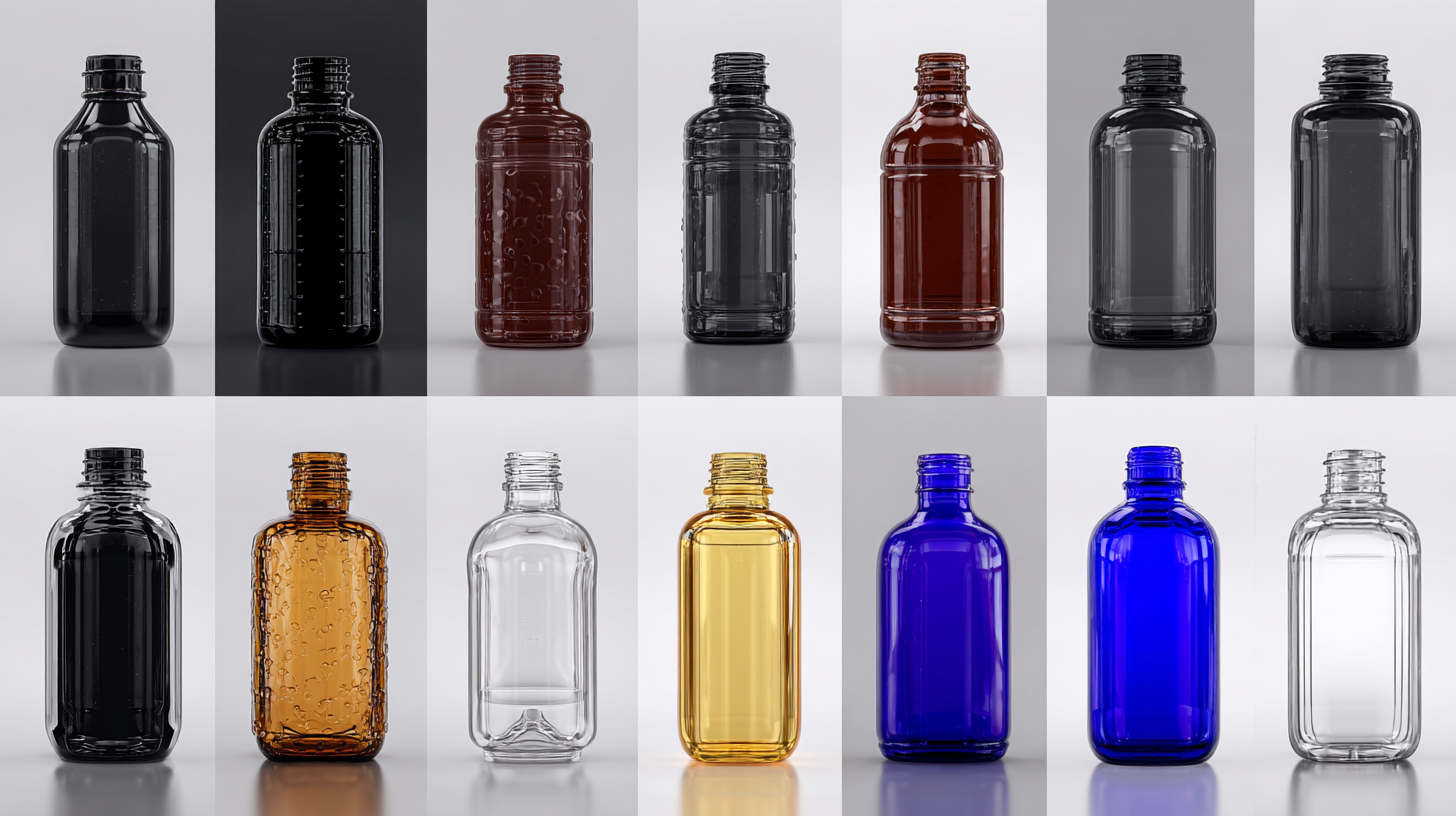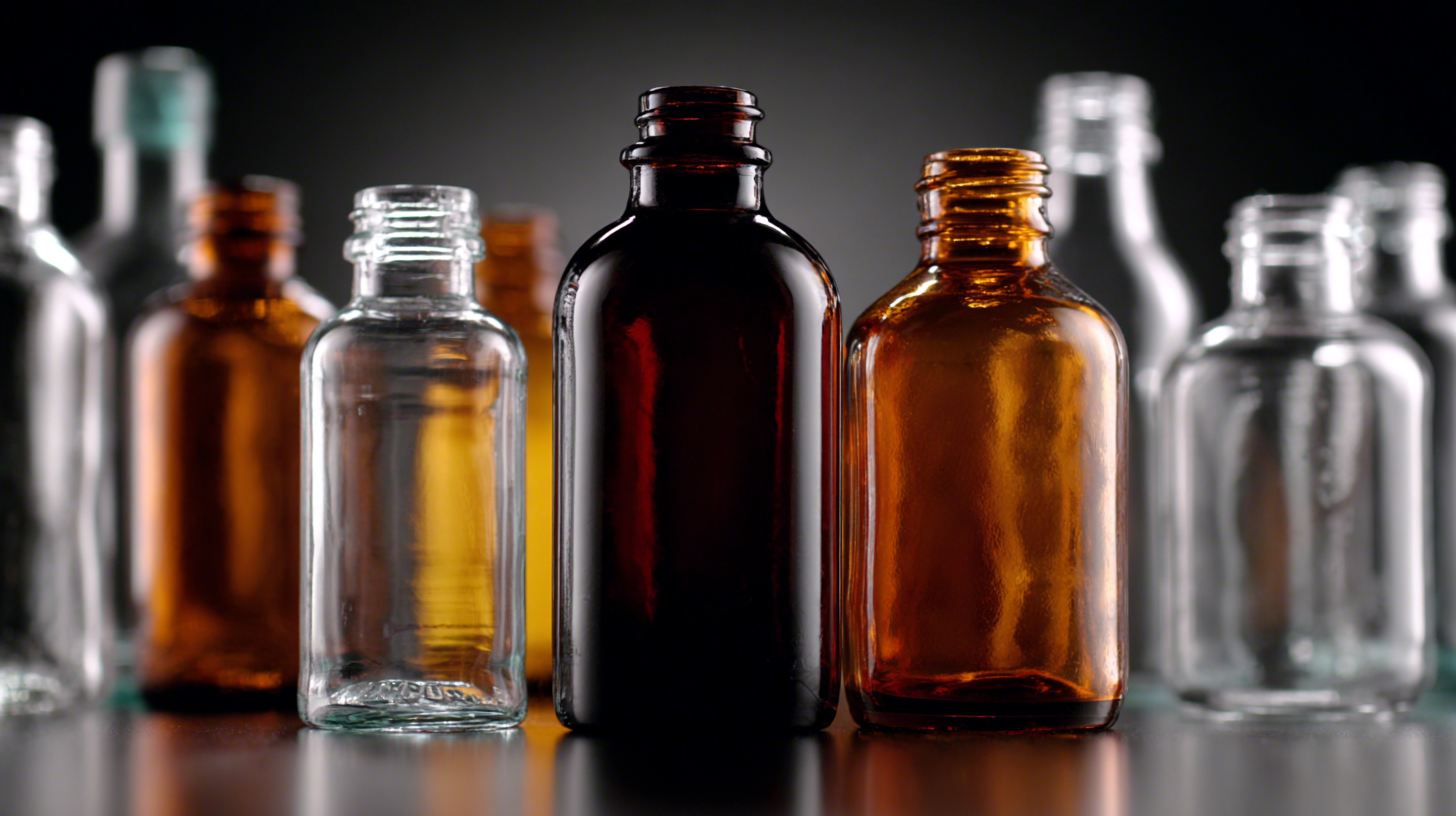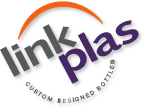Understanding the Unique Features and Applications of Top Quality Bottles for Global Buyers
In today's global market, the demand for high-quality product bottles has surged, driven by the need for effective branding, sustainability, and functionality across various industries. Understanding the unique features and applications of these bottles is essential for buyers seeking to make informed purchasing decisions. This blog will delve into the top strategies for selecting the right product bottles, highlighting key factors such as material quality, design versatility, and suitability for specific contents. By exploring innovative solutions and trends in bottle production, we aim to equip global buyers with the knowledge to enhance their product offerings while meeting consumer expectations.

Whether for cosmetics, beverages, or pharmaceuticals, the right product bottles can significantly impact a brand's success and appeal in a competitive landscape.
Key Characteristics That Define Top Quality Bottles for Buyers
When it comes to selecting top-quality bottles, several key characteristics stand out that define their superiority for global buyers. First and foremost, durability plays a crucial role. A high-quality bottle must withstand varied environmental conditions, whether it's extreme temperatures or rough handling during transportation. This ensures that the contents remain safe and intact over time, which is essential for both consumers and manufacturers. Materials like BPA-free plastics or tempered glass are often preferred, as they not only enhance the bottle's longevity but also contribute to the safety of the liquids housed within.
Another significant characteristic is design versatility. Premium bottles should cater to a diverse range of applications, from beverage packaging to skincare solutions. Aesthetic appeal combined with functionality allows brands to attract a broader audience. Additionally, features such as ergonomic shapes and easy-to-use caps enhance the user experience, making the bottles more appealing to consumers. Buyers are increasingly looking for bottles that do not just serve a purpose but also contribute to a sustainable lifestyle, emphasizing the importance of eco-friendly materials and recyclability in their purchasing decisions. These attributes collectively shape the buyer's perception of what constitutes a top-quality bottle.
Top Quality Bottles Features and Applications
Innovative Materials Enhancing Durability and Performance in Bottles
In today's competitive market, the choice of materials used in bottle production plays a significant role in determining durability and performance. Innovative materials such as high-density polyethylene (HDPE), glass, and biodegradable plastics are transforming the bottle industry. HDPE is favored for its strength and resistance to impact, making it ideal for various applications, from packaging household cleaners to beverage containers. Meanwhile, glass bottles offer sustainability and an inert nature, ensuring that no chemicals leach into the contained liquids, preserving taste and purity.
Another significant advancement in bottle design is the use of nano-coatings and other innovative surface treatments. These enhancements improve scratch resistance, prevent bacterial growth, and create easy-to-clean surfaces, thus prolonging the lifespan of the bottles. Additionally, materials like Tritan™ are emerging as popular alternatives to traditional plastics, offering clarity and shatter-resistance while being free of harmful chemicals. As global buyers increasingly demand higher quality and eco-friendly products, the integration of these innovative materials sets a new standard in the bottling industry.

Environmental Impact: Sustainable Practices in Bottle Production
The environmental impact of bottle production has become a pivotal concern for consumers and manufacturers alike.
As global buyers increasingly demand sustainable products, the beverage and packaging industries are responding by refining their practices.
High-quality bottles are now being produced with eco-friendly materials, aimed at minimizing carbon footprints and reducing waste.
Recycled plastics, glass, and plant-based alternatives are at the forefront of this shift, ensuring that each bottle not only serves its primary function but also contributes to a healthier planet.
Moreover, innovative technologies are enhancing the sustainability of bottle production.
Techniques such as lightweighting, which reduces the amount of material used without compromising durability, are gaining traction.
This not only lowers the energy consumption during manufacturing but also cuts down transportation emissions.
Companies are also adopting closed-loop systems, where used bottles are collected, recycled, and transformed back into new bottles, maintaining a cycle that supports environmental conservation.
As awareness grows, the call for responsibly sourced and produced bottles will continue to shape industry standards and consumer choices worldwide.
Versatile Applications: Choosing the Right Bottle for Different Needs
When selecting the right bottle for various applications, buyers must consider both functionality and material. According to a recent industry report by Smithers, the global market for bottles is projected to grow to $200 billion by 2025, driven largely by the rise in sustainable packaging solutions. This trend highlights the importance of choosing bottles made from recyclable materials, such as glass and certain plastics, which cater to environmentally conscious consumers.
 Versatility is key when determining the appropriate bottle type for specific needs. For instance, PET bottles are ideal for beverages due to their lightweight nature and excellent barrier properties, while glass bottles are preferred for premium products, such as craft beverages and cosmetics, due to their ability to preserve flavor and quality. The packaging industry is continuously innovating, and reports indicate that reusable and refillable bottles are gaining popularity, further emphasizing the importance of selecting bottles that align with modern consumer preferences and sustainability goals. By carefully considering the unique features of various bottles, global buyers can make informed decisions that meet diverse market demands.
Versatility is key when determining the appropriate bottle type for specific needs. For instance, PET bottles are ideal for beverages due to their lightweight nature and excellent barrier properties, while glass bottles are preferred for premium products, such as craft beverages and cosmetics, due to their ability to preserve flavor and quality. The packaging industry is continuously innovating, and reports indicate that reusable and refillable bottles are gaining popularity, further emphasizing the importance of selecting bottles that align with modern consumer preferences and sustainability goals. By carefully considering the unique features of various bottles, global buyers can make informed decisions that meet diverse market demands.
Expert Tips for Selecting the Best Bottles in a Global Market
When selecting bottles in a global market, it’s crucial to understand the diverse materials and designs that cater to different consumer needs. According to a recent report by Market Research Future, the global bottle market is projected to reach approximately $300 billion by 2025, driven by increasing consumer demand for sustainable packaging solutions. This growth highlights the importance of choosing bottles that not only meet safety standards but also reflect eco-friendly values, such as those made from recycled materials or bioplastics.
Additionally, considering the application of the bottles is vital. For instance, the beverage sector significantly influences bottle design trends, with a reported 60% market share held by glass and plastic packaging. Industry experts emphasize the need for brands to invest in quality closures and user-friendly designs that enhance consumer experience while ensuring product longevity. By leveraging insights from industry reports, buyers can make informed decisions that align with current market trends and consumer preferences, ensuring their chosen bottles stand out in a competitive landscape.
CONTACT US
|
